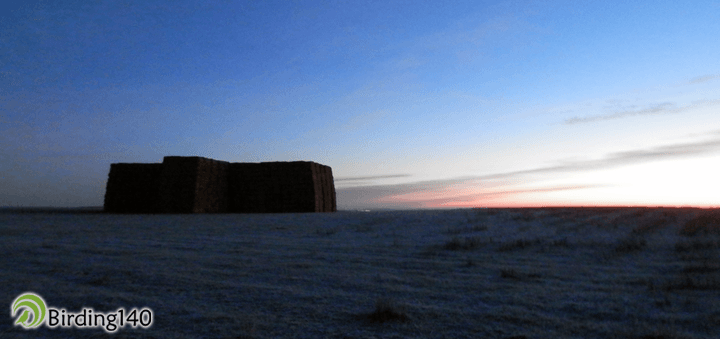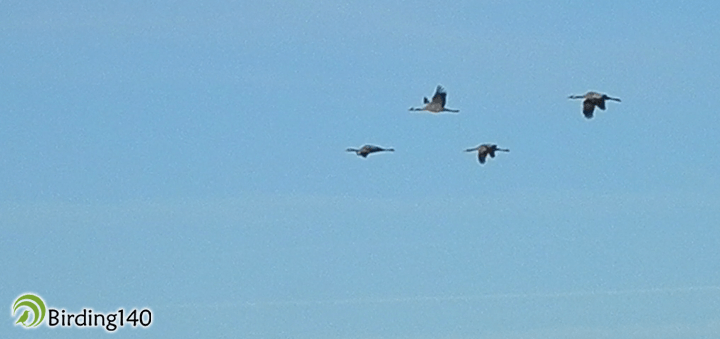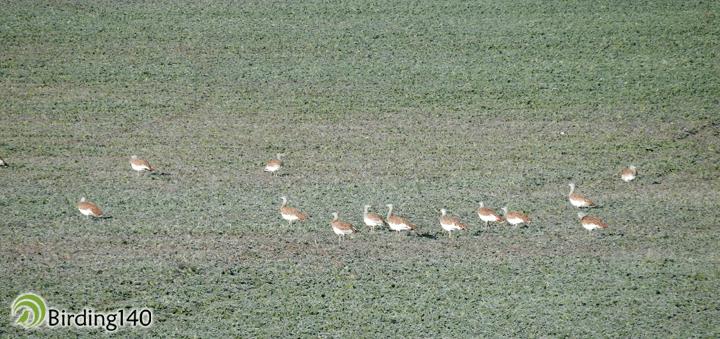On Saturday 21 December, the first day of winter, we visited the ZEPA (special zone for protection of birds) Tierra de Campiñas, on the south of the small city of Medina del Campo. Our aim was to watch cranes, but it wasn’t easy to achieve. The place is not marked and we had to locate the cranes before dawn, so we were at risk of getting lost in the dark. Our allies were the light of a powerful waning moon –barely four days after a full moon–, a beautiful star-filled sky after five days of rain and, lastly, the boisterous behaviour of the cranes at daybreak, with their peculiar grus grus that can be heard from a long distance.
Around 7:30 we started our walking route. We headed towards one of the few hillocks of the place with the aim of finding some of the ponds located in the vast plain of Tierra de Campiñas. As we were getting closer, we could see a building in the dark. Something was happening: there shouldn’t be any buildings in the area, just crops and some scattered pine woods. Had we got lost?
We kept on walking to the summit and, with the first lights, we could see what we thought was a building was actually a pile of straw bales, which meant we were in the right place.
We scrutinized the plain from the summit, but we couldn’t see anything; we pricked up our ears searching for the grus grus, but there was no trace. We decided to keep going to the place were the biggest pond should be, and we were very disappointed when we got there: the rains of recent days hadn’t been enough to keep it full, so it was just a sandy area. Our chances of watching cranes at close range had vanished; we just had the possibility of catching sigh of some group of cranes flying over in the distance.
When we were close to the next hillock we had a surprise, our luck changed drastically: one of the most difficult birds to watch in winter was in front of us. We saw one first, then two and, finally, a group of about fifteen bustards. It was going to be a good birding day after all.
We kept on walking and we surpassed the hillock. Then, in an area with small pine woods, we had luck again. Several groups of cranes could be seen from a rather close distance.
Before we started our way back at the break of the day we had one last surprise: we could get sight of one, two, three and up to fifty bustards. It was a great day of birding. What started like a disappointment ended up being a great show.















